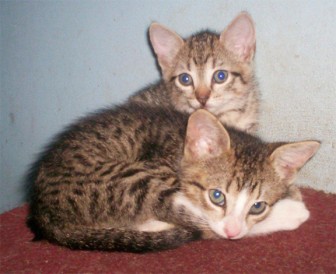Ruptured ligaments/tendons
By its more specific definition, a ligament is a short band of tough flexible fibrous tissue binding bones together. A tendon on the other hand, is a strong band or cord of tissue forming the termination or connection of the fleshy part of the muscle. In other words, the muscle packets surrounding the long bones end on both sides in tendons which themselves are attached to the bones. The muscles are not attached to the bones by themselves, rather via the tendons.
Rupture of the Achilles tendon
 You all know the story of how Achilles was killed. The word vulnerability is now often linked metaphorically with the Achilles tendon. The fact, however, is that this tendon which connects the calf muscles with the heel (hock joint) is quite tough and can withstand immense strain. As with everything though, one can carry the pressure up to such a degree that even the toughest tissue snaps. Hunting dogs and racing dogs place great tension on the Achilles tendon in the course of their specific activities. Heavy (adipose) dogs are predisposed to this problem because of the weight their bodies place on the tendons. Also, very often, these tendons are severed during dog fights and car accidents, and during lawn mowing.
You all know the story of how Achilles was killed. The word vulnerability is now often linked metaphorically with the Achilles tendon. The fact, however, is that this tendon which connects the calf muscles with the heel (hock joint) is quite tough and can withstand immense strain. As with everything though, one can carry the pressure up to such a degree that even the toughest tissue snaps. Hunting dogs and racing dogs place great tension on the Achilles tendon in the course of their specific activities. Heavy (adipose) dogs are predisposed to this problem because of the weight their bodies place on the tendons. Also, very often, these tendons are severed during dog fights and car accidents, and during lawn mowing.
A rupture of the Achilles tendon takes place when there is a sudden and extreme flexion (bending). Usually, the rupture takes place closer to the hock joint. X-rays sometimes help in determining the actual location of the rupture, but any experienced vet can, by palpation, find exactly where the rupture point is. Besides, since the rupture is often created by some external cut, we can see exactly where the lesion is.
In addition, the tendon is flaccid and the area is usually swollen. Surprisingly, there is not much pain associated with an Achilles tendon rupture.
The first and very visible symptom of an Achilles tendon injury is the characteristic alteration in the animal’s stance and gait. The dog is no longer able to stand and walk on its toes of the affected limb. In some cases, the hock can even touch the ground.

The treatment is always surgical. And the surgical repair must be immediate. Tendons don’t heal well, so there is no question of bandaging or placing the leg in Plaster of Paris. Actually, ruptures with a clean separation (a sharp cut from a cutlass or scythe blade) of the ends are easier to repair. After the surgery, the entire leg has to be immobilized (in a slightly flexed position) for up to six weeks.
Ruptured knee ligaments
(torn cruciates)
We have been discussing tendon injuries and general joint problems in dogs. Within this context, we cannot omit the damage that occurs to the ligaments of the true knee of the dog (and all other four-legged animals) which is to be found on the hind legs. Very often, people speak of the knee especially in horses) being on the front leg. The knee joint (or stifle joint as it is also known) is where the thigh bone (femur) meets with the two lower leg bones (tibia and fibula). The ‘Great Mechanic’ knew what he/she was doing when extra support was given to this joint, which is under severe pressure when standing, walking or running. Some of the joint support/stabilization is in the form of cruciate ligaments, and they too can get injured.
The cruciate ligaments (cruciates) are so called because the two of them cross each other in the middle of the joint. A rupture of the top one (usually, although both can be torn) is very often due to excessive force acting on the ligament(s). Other contributing factors for the rupture could be the possible weakening of the ligament(s) as a result of (i) genetic predisposition, (ii) tissue degeneration, (iii) immune-related diseases, or (iv) anatomical ‘defects’ (eg, straight-legged dogs). Also, according to the literature there seems to be an affinity of the ‘toy breeds’ to succumb to this problem, but the most cases I have encountered with ruptured cruciates were in dogs of the large breeds – German Shepherds, Dobermans, Rottweilers and hunting dogs. Police and army dogs, which go through rigorous training and daily exercises, have a lot of pressure placed on the joints and the ligaments. Their heavy weights do not help matters.
Next week we will continue with the symptoms and treatments of the ruptured knee.




